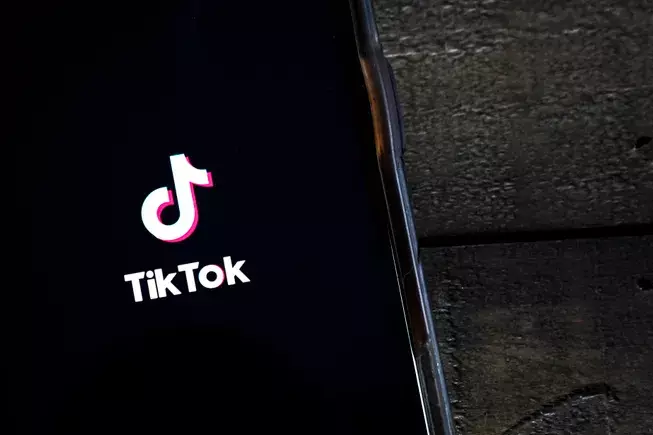In recent months, TikTok’s ongoing battle with U.S. policymakers and regulators has taken a fresh turn that could fundamentally alter how millions of Americans experience the platform. The company is reportedly developing an American-only version of its popular app, a move that signals both a strategic retreat and a calculated effort to adapt to the complex geopolitical landscape. This development embodies more than just a technical adjustment; it represents a broader shift in digital sovereignty, corporate diplomacy, and user engagement strategies. For TikTok and its parent company, ByteDance, this is not merely about compliance but about asserting control over their core product amidst mounting external pressures.
The concept of an exclusively U.S.-focused iteration — tentatively dubbed “M2” — hints at a dual-access approach designed to ensure continuity of service for American users while satisfying government-imposed restrictions. This segmentation could potentially allow ByteDance to maintain autonomy over the main app in other regions, particularly in China and Southeast Asia, where its user base is booming. At the core of this move lies a strategic response to the “Protecting Americans from Foreign Adversary Controlled Applications Act,” which aims to curb foreign influence and impose strict control over apps deemed a national security risk.
However, the true impact of this shift depends on what differences this new version will introduce. Will it be a hollow shell, or will it transform TikTok into a platform where user engagement remains as addictive and compelling as ever? If the latter, it could be a pivotal moment—a way for TikTok to uphold its global appeal while appeasing U.S. authorities. Critics, however, argue that such bifurcation might dilute the platform’s core algorithmic engine, which is responsible for the personalized content that keeps users hooked. Stripping away or restricting algorithm access could jeopardize the very essence of TikTok’s success, raising questions about whether the platform’s addictive quality will survive this upheaval.
Balancing Control and Competition: The Implications of a U.S.-Only TikTok
The decision to create a separate U.S.-only version is likely driven by intense regulatory pressure, but it also reveals a strategic desire for ByteDance to retain bargaining power. By carving out a domestic version, the company can navigate legal hurdles, limit foreign influence, and potentially avoid complete sell-offs of assets or algorithmic code. This approach may serve as a compromise, balancing national security concerns with a desire to preserve the platform’s core features for Americans.
Yet, this move could backfire if it results in a fragmented user experience that diminishes engagement. TikTok’s explosive growth hinges on its highly personalized, algorithm-driven feed that adapts in real-time to user preferences. Any attempt to segregate or restrict access to this engine could lead to a less compelling product that might risk losing user interest. In this context, whether TikTok can maintain its addictive edge through a simplified or restricted version remains the critical uncertainty.
From a geopolitical perspective, the creation of an “American frontier” for TikTok could be a double-edged sword. On one hand, it might soothe regulatory nerves and open pathways for continued operation; on the other, it risks setting a precedent for digital decoupling, fragmenting the global social media landscape, and fueling ongoing debates over data sovereignty. If successful, this could mark the beginning of a new era where tech giants are forced into regional isolation, fundamentally altering how we consume and interact with digital content.
The Broader Power Play: The U.S. Political-Technical Manoeuvre
This development emerges amid a broader political narrative that sees TikTok as more than just a social app—it is a pawn in a larger geopolitical chess game. The Trump administration’s recent indications that a buyer for TikTok has been approved, coupled with escalating pressures to enforce a forced sale, underscore the fragility of ByteDance’s grip on the platform in the U.S. The timing of the new app version’s anticipated launch coincides with a legal and political deadline, raising the possibility that this move is part of a broader strategy to preempt a full surrender of control.
The proposed buyer group, described vaguely as “very wealthy Americans,” signals an attempt to localize ownership and governance, theoretically reducing concerns over foreign influence. Yet, whether this will genuinely address security worries or merely serve as a facade remains questionable. The risk lies in transforming TikTok into a more controlled, less innovative platform—one that might be less appealing precisely because it strips away the algorithmic magic that makes TikTok unique.
The coming months will reveal whether this complex balancing act will succeed in preserving TikTok’s relevance in the U.S. market. If the platform can retain its engaging algorithm, even within a limited or modified version, it could stave off decline and continue to captivate a new generation of users. Conversely, if restrictions cripple its core mechanics, TikTok might face long-term stagnation, or worse, fragmentation and decline as users seek more open or personalized alternatives.
Undoubtedly, this is a pivotal moment—one that could redefine the future of digital federalism, corporate innovation, and how users worldwide experience one of the most influential social platforms of our time. Whether TikTok emerges unscathed or is drastically reshaped depends on how effectively it navigates these treacherous geopolitical waters while still delivering the compelling content that made it a cultural phenomenon.

